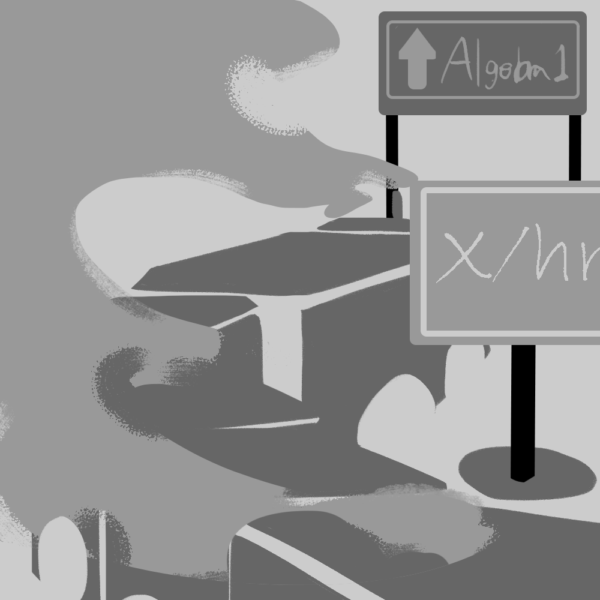
Like others in the accelerated math pathways at Aragon, my journey began as a middle schooler in the San Mateo-Foster City School District when I participated in the pathway. This pathway allowed me to complete Math 6, 7 and 8 in sixth and seventh grade by taking 1.5 years worth of math each year, and Algebra 1 in eighth grade along with an optional zero period Geometry class.
Recently, the SMFCSD School Board proposed new pathways in order to increase the accessibility of Algebra 1 for eighth graders and keep all engaged in their math classes. The San Mateo Union High School District and SMFCSD have also agreed that Geometry will be taken in high school due to concerns about the quality and depth of the zero period classes in SMFCSD and community college summer classes.
The Board proposes three possible pathways students can take. All students would take the same combined Math 6 class, after which they can choose which pathway they would like to pursue. The first pathway would be to take Math 7 and Math 8 in seventh and eighth grade, respectively. The second pathway would be to take a Bridge Study program in the spring semester of sixth-grade that covers the Math 7 curriculum and would likely be held before or after school. After taking this course, the students would take a placement test to ensure their readiness, then take Math 8 in seventh grade and Algebra 1 in eighth grade. The third pathway would be for students to take Math 7 in seventh grade, but take a two period block of math in eighth grade in order to cover the entirety of the Math 8 curriculum in the fall semester and the entirety of the Algebra 1 curriculum in the spring semester.
The decision to create a single Math 6 class for all sixth graders stems from concerns of fifth grade math performance being impacted by the pandemic as well as a general sense that sixth graders are not ready for such a big transition in terms of study habits and the change from one teacher to multiple. This is a valid concern, supported by the fact that all other districts in the county except the SMFCSD and Hillsborough have stopped offering compacted math in sixth grade. Many students try to transfer into compacted math pathways in seventh grade but are not able to because the class is already far ahead. In this manner, having compacted math start later will make the program more accessible to people who may not be aware of or prepared for it until sixth or seventh grade.
Though the later start is an honorable change, the continuation of the pathways after sixth grade present some severe flaws that will diminish accessibility. Unlike the current compacted math pathway, both new pathways involve extra time spent on math, which many students may not want or be able to spend. In the Bridge Study pathway, students will have to take a class before or after school, which may not be accessible for those who may have to take care of siblings after school or whose parents are not able to take them early. This will likely affect BIPOC communities disproportionately, which will inhibit the District from reaching their goal of more Latinx representation in the compacted math pathways. Currently, District data shows that Latinx students only make up 5% of the students in compacted math although they make up 35% of the District population.
In the other pathway, where students take a double block of math, students will have to give up one of their elective periods unless it is a zero period. This will discourage many students who may be proficient in math, but would rather spend the time exploring their interests through an elective. This will go against the goal of more eighth grade students in Algebra 1. Furthermore, many students feel fatigued in longer block periods and unengaged in the material, so teachers may not actually be able to cover double the amount of material. According to an InformED article, student attention decreases over a longer period of time, and experiments found that by the end of a lecture, a student experiences lapses in attention about every two minutes.
Overall, changing the math pathways to start later is a worthy goal, but the proposed methods of implementation are more of a hassle than the existing compacted math pathway. Instead, it would be in the District’s best interest to inform more people about the compacted math pathway before sixth grade and create more opportunities for students to join the pathway later in their middle school years.



